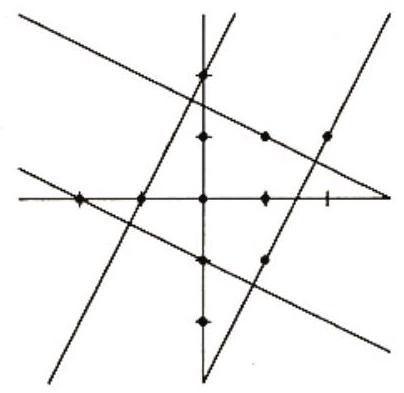Problem:
A point in the plane is called a lattice point if both and are integers. The area of the largest square that contains exactly three lattice points in its interior is closest to
Answer Choices:
A.
B.
C.
D.
E.
Solution:
If a square encloses three collinear lattice points, then it is not hard to see that the square must also enclose at least one additional lattice point. It therefore suffices to consider squares that enclose only the lattice points , , and . If a square had two adjacent sides, neither of which contained a lattice point, then the square could be enlarged slightly by moving those sides parallel to themselves. To be largest, therefore, a square must contain a lattice point on at least two nonadjacent sides. The desired square will thus have parallel sides that contain and at least one of and . The size of the square is determined by the separation between two parallel sides. Because the distance between parallel lines through and can be no larger than , the largest conceivable area for the square is . To see that this is in fact possible, draw the lines of slope through and , and the lines of slope through and . These four lines can be described by the equations , , , and , respectively. They intersect to form a square whose area is , and whose vertices are , , , and . There are only three lattice points inside this square.
